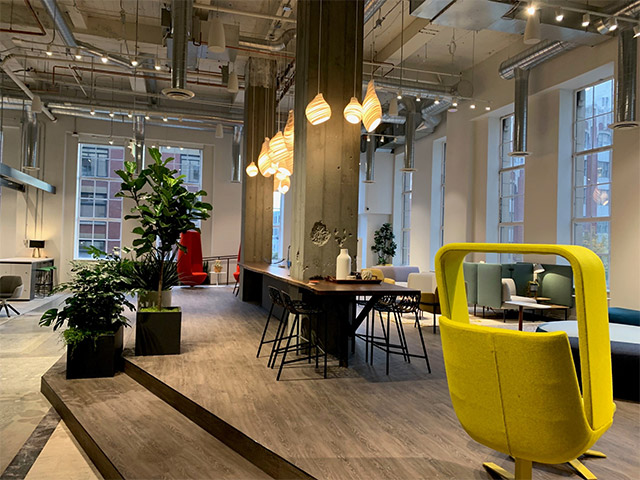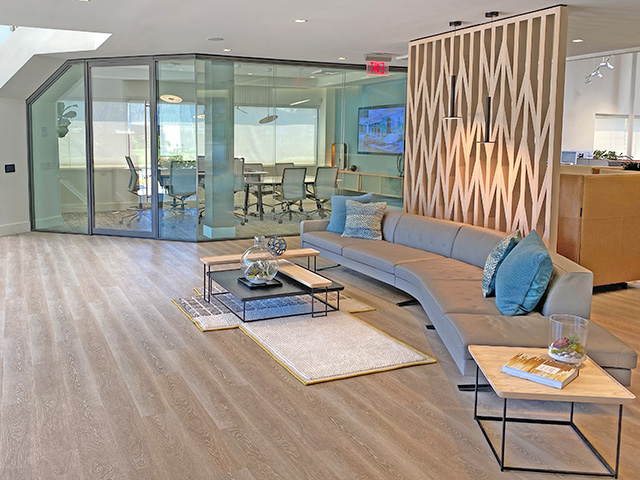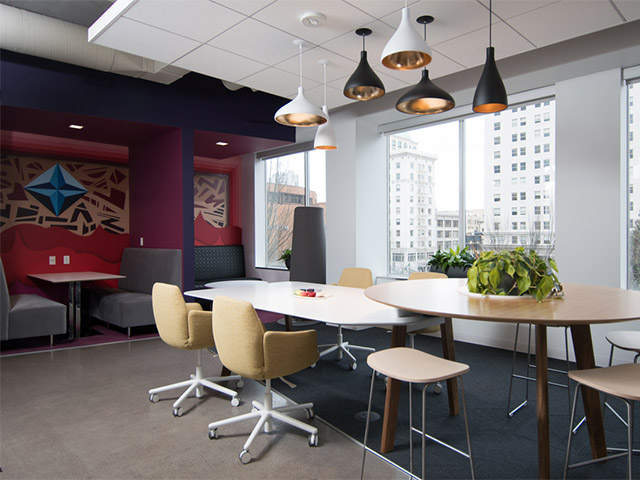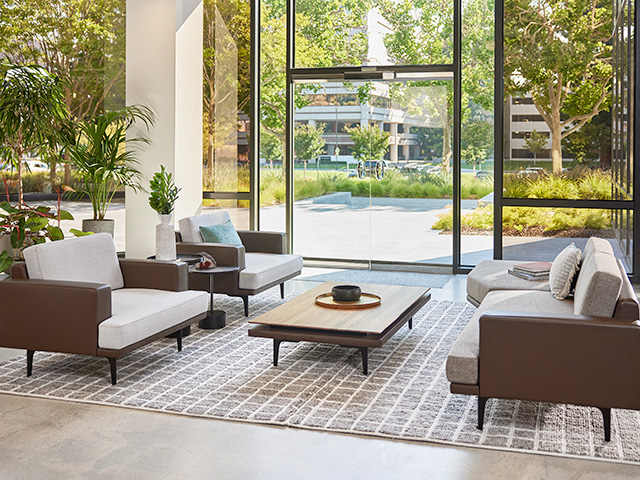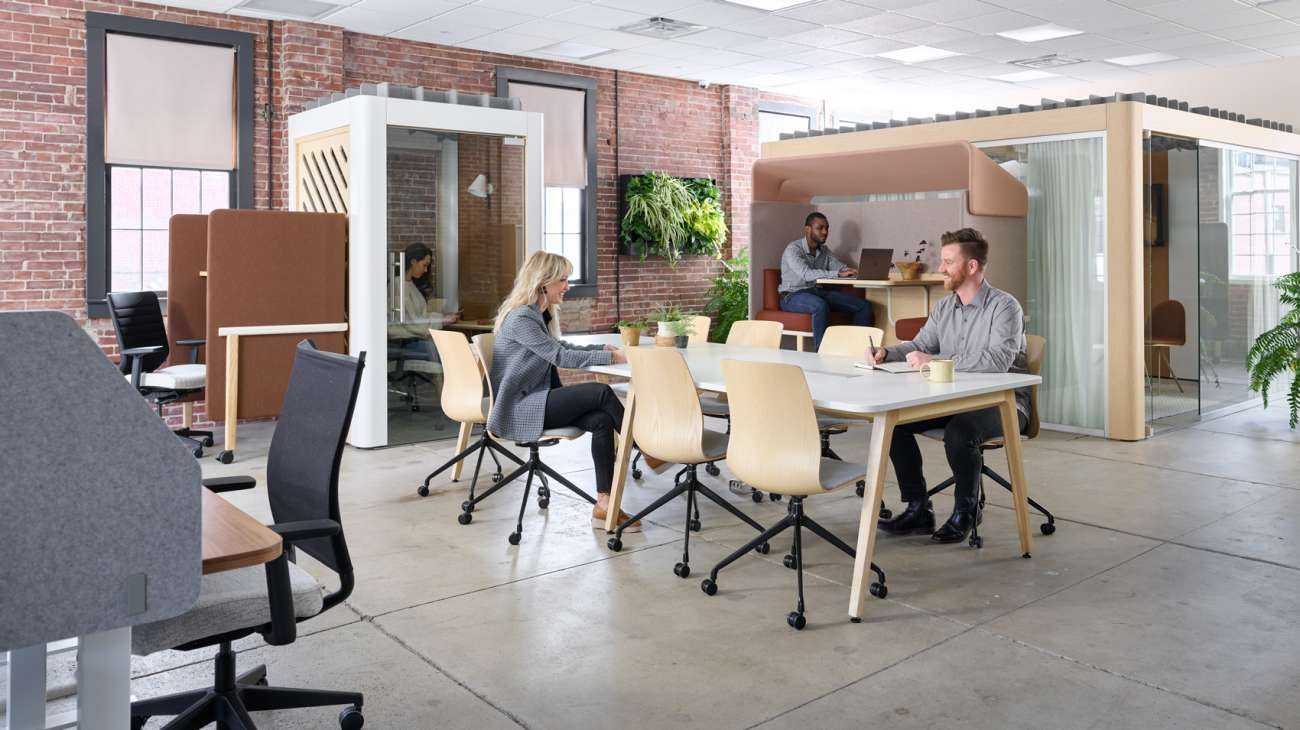
The workplace is changing. Businesses are increasingly embracing the idea of hybrid workplaces, which combine traditional office space with a remote work environment. This has created an entirely new set of considerations for businesses, such as how to design more efficient workspaces and what type of furniture is best suited for this new model. Here’s what you need to know for those wondering what a hybrid workplace looks like and how it can be implemented in their organization.
How Hybrid Workplaces Work
A hybrid workplace combines traditional office space and remote working environments into one unified system. This means that employees can either work from the office or home, depending on their preferences or needs, at any given time. Because of this flexibility, hybrid workplaces can help reduce overhead costs associated with traditional offices while still promoting collaboration among team members.
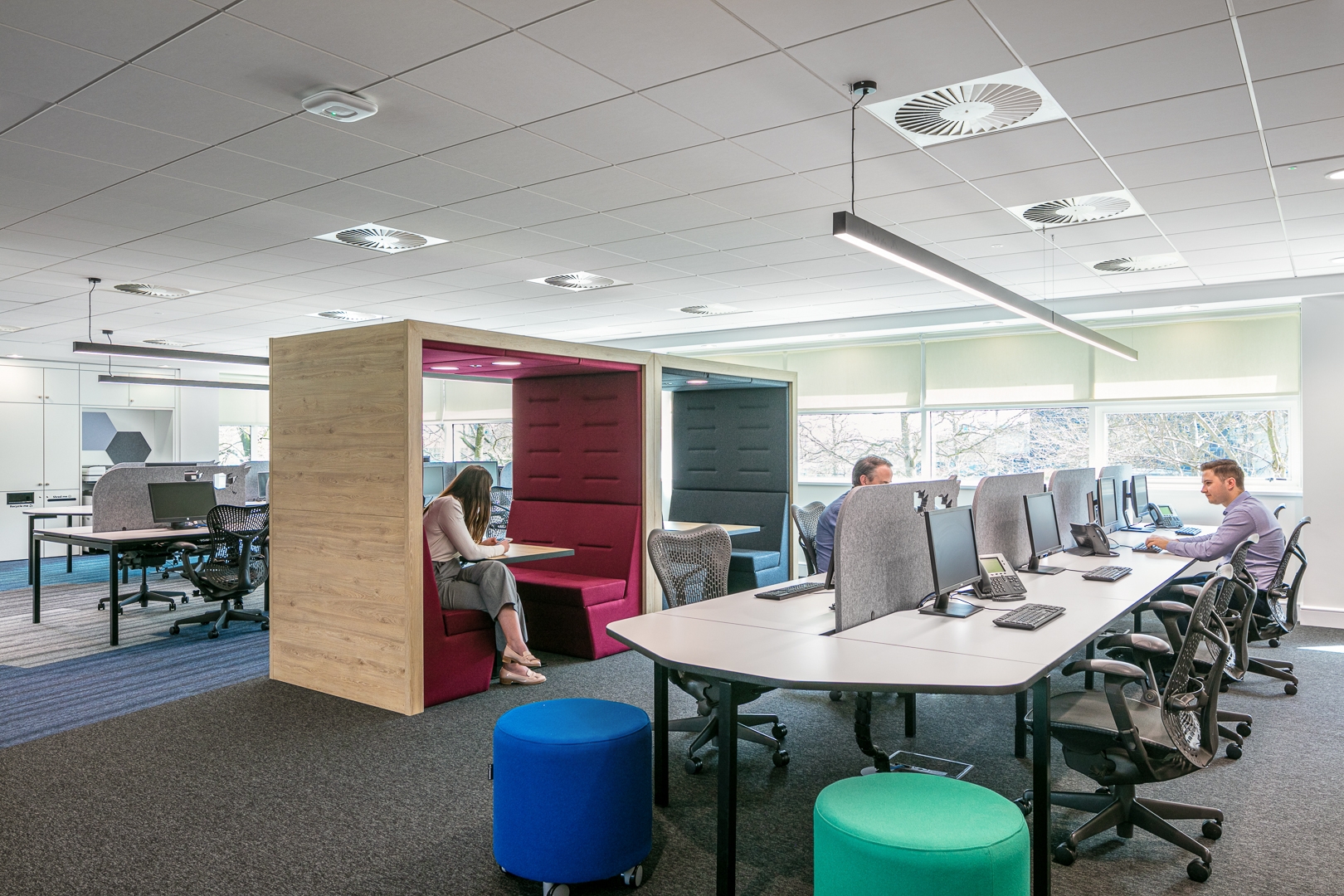
Workplace Design Considerations for Hybrid Offices
When designing a hybrid office space, a few things must be considered. First and foremost, a hybrid workplace culture should prioritize collaboration, socialization, and communication across both in-person and remote teams. Secondly, think about the furniture; it should be a place that is comfortable, flexible, and easy to navigate. It should be inviting - think of it as a commute-worthy destination your team wants to visit.
Next, ensure that the workplace supports both in-person and virtual collaboration with accessibility to technology. Technology is often an integral part of this culture, allowing for a blend of virtual meetings, instant messaging, voice chats, and video conferencing.
Finally, support employee wellbeing. This can be achieved through access to employee amenities, such as outdoor spaces and healthy food options, events that promote employee engagement, and biophilic design elements that bring nature inside the office. These are all important considerations for creating an effective and comfortable workplace environment.
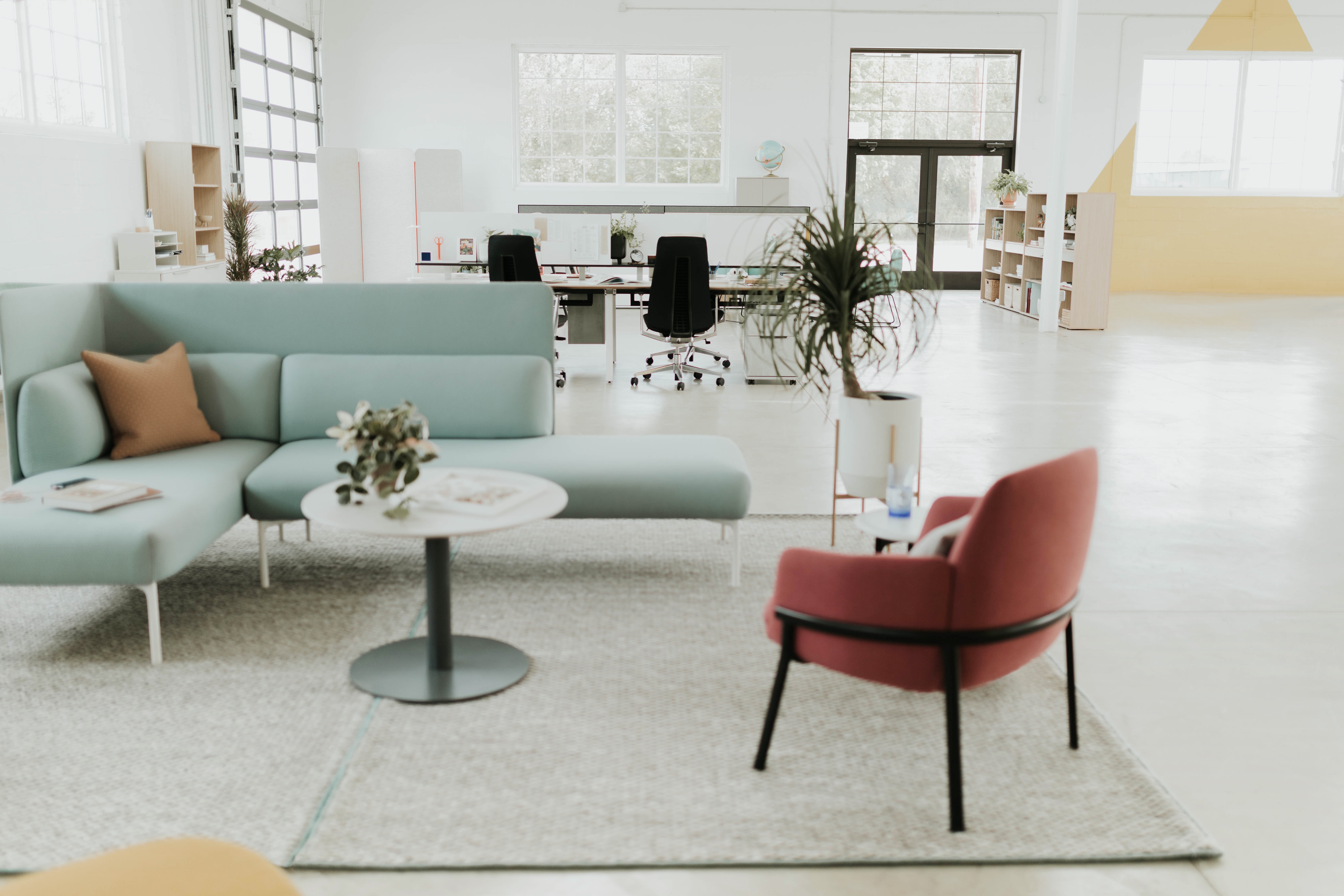
Furniture Considerations For Hybrid Offices
When furnishing a hybrid workplace, the key is creating an atmosphere that encourages collaboration and productivity. Flexible furniture solutions are essential for creating different types of workspaces, such as private cubicles or open-plan seating areas.
Start with adaptive office furniture or architectural interior elements. This type of furniture offers flexibility and adjusts to changing needs while still providing the comfort and convenience required by employees. Adaptive furniture also features power, charging, and wireless technology built in, allowing for a range of working positions that are comfortable and supportive throughout.
Adaptive furniture can also help create a more collaborative working environment by encouraging employees to interact with each other in various office areas, such as in break-out rooms and around meeting tables. This type of furniture is perfect for creating an open-plan workspace that encourages collaboration while providing enough space for individual work.
Another thing to consider when selecting furniture for your hybrid workplace is choosing pieces that offer high levels of comfort and adjustability without sacrificing aesthetics. For instance, many people prefer adjustable standing desks because they allow users to quickly switch between sitting and standing with just the press of a button. Additionally, ergonomic chairs are essential for providing support during long hours spent working at a computer or attending virtual meetings.
Finally, ensure you select furniture pieces that fit your budget since hybrid workplaces tend to require fewer pieces than traditional offices due to their smaller size requirements.
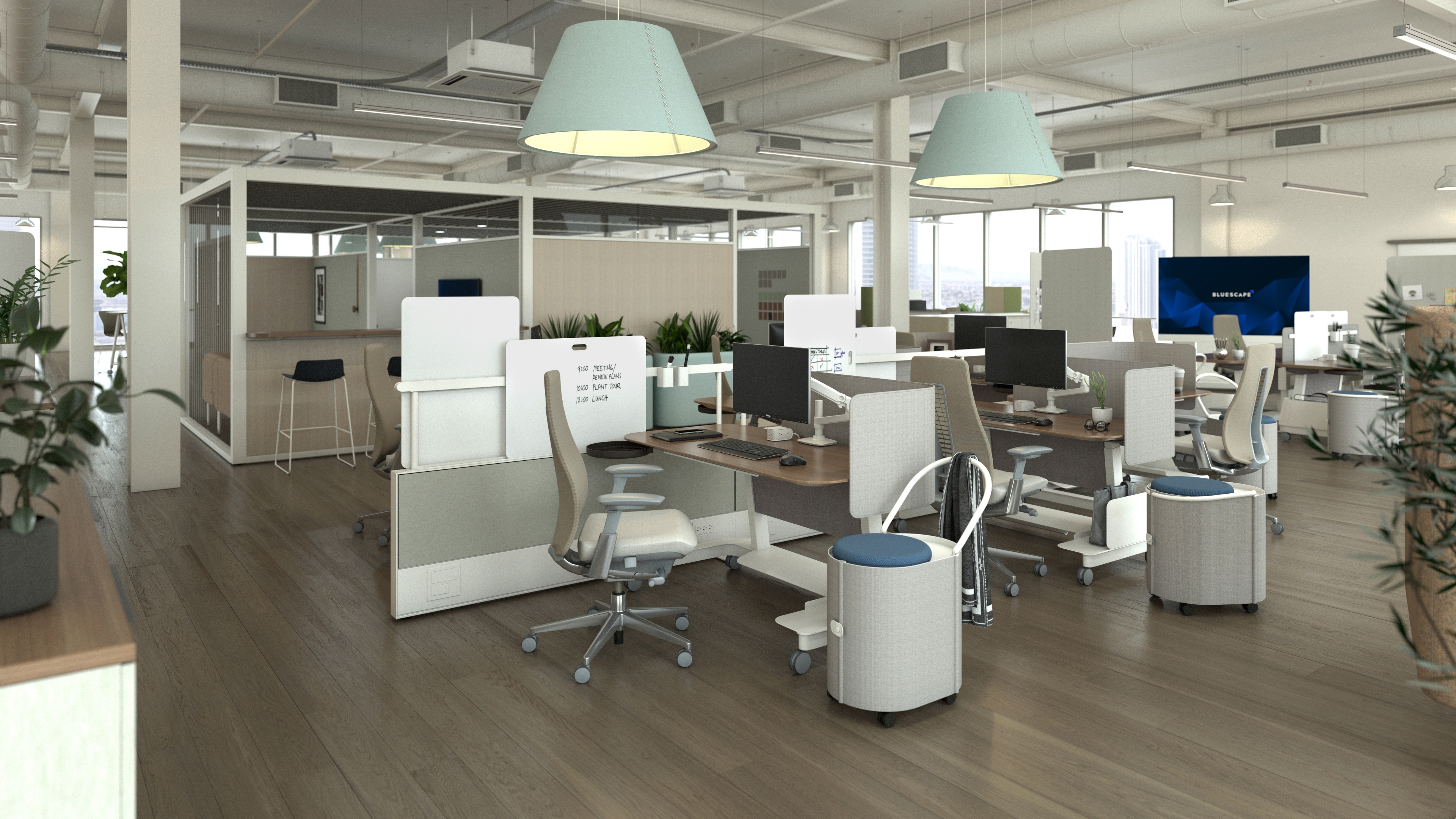
Architectural Interior Considerations For Hybrid Offices
We should envision the office landscape as a series of sections or communities designed to accommodate the needs of employees working in the office and those working remotely. This means architectural interiors must be designed with both groups in mind, taking into account factors such as technology, agility, privacy, and comfort.
One such suggestion would be moveable walls. They are a great way to maximize the potential of limited space. These walls can be easily reconfigured to adapt to changing needs and allow for more privacy or collaboration. Moveable walls enable companies to quickly divide a space and create individual workspaces or private offices.
Another suggestion would be freestanding architectural interior solutions like modular space dividers or booths. Both have become increasingly popular solutions for companies as they are easy to move and allow team members private spaces to make confidential calls, a place for respite, or to focus on a task without interruption.
These moveable elements allow organizations to respond to nimble groupings, making team sections or communities feel more like rooms, ultimately replicating a more intimate environment that team members previously had in their homes.
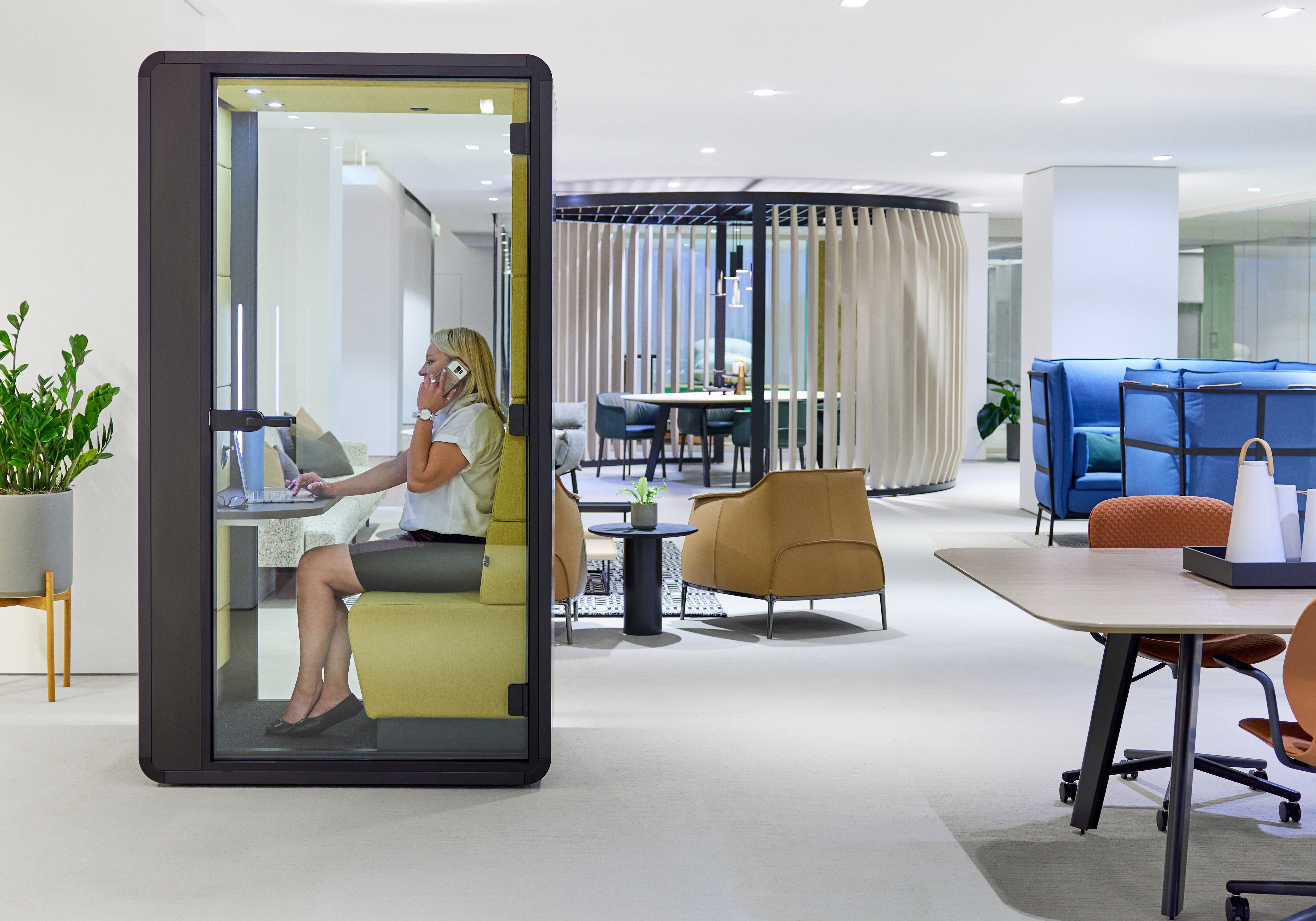
Conclusion
Creating a successful hybrid workplace is a complex endeavor, but it can be incredibly rewarding for businesses that embrace this new model. By considering both workplace design and furniture needs, businesses can ensure that their hybrid office provides an environment that encourages collaboration and productivity among all their employees - all while still allowing employees to take advantage of the freedom and flexibility associated with remote work. Start designing your dream hybrid office space today!
Take a look at our Hybrid Office Lookbook to help you envision your Hybrid Workspace
FOR MORE INFORMATION, PLEASE CONTACT
Michelle Sample
marketing@peoplespace.com

